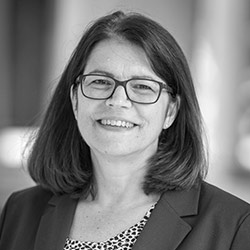Building the Next Generation of Leaders
Robert A. McConnell (B.Arch. ’82) is the president of EwingCole, a nation-wide, award-winning firm that provides professional services in architecture, engineering, and interior design. “I think the demanding rigor of producing quality work was an important aspect of my undergraduate education,” McConnell says about his time at New York Tech. “Architecture requires you to see and think differently. Seeing things through a different lens and thinking of things critically are tremendously useful skills, for almost anything you might do in the future.” McConnell sat down with The Box to talk about the work that he does and where he sees the industry going.
Why did you decide to study architecture? What excites you most about the field?
From an early age, my parents supported my passion for art. I attended the High School of Art and Design in Manhattan. The school allowed students to explore all forms of art, painting, illustration, photography, sculpture, as well as explore professions where art was at the forefront; cartooning, fashion design, graphic design, and architecture. I had no prior experience with architecture before attending Art and Design and was fascinated by the potential for architecture as an art. In my senior year of high school, a very good friend was a year ahead of me and was attending the New York Tech architecture program. I visited New York Tech for an exploratory day within the Department of Architecture, and I liked the energy and enthusiasm. There seemed to be a lot of dedication and positive energy about being in architecture at New York Tech.
The thing that initially attracted me to architecture was conceptual thinking, the envisioning of what things could be. The idea that I could draw buildings as images, sketches, and renderings and then see them turned into reality. It was the careful balance of being artistic and creative, but also pragmatic and useful. As I developed a more sophisticated understanding of architecture and buildings, particularly of the importance of how people use space and the dynamics of the inside/outside relationships, I expanded my interest to placemaking and urban planning. The complex formal relationships between buildings and open spaces and the societal dynamics of the public realm become of interest.
Tell us about your job as the president of EwingCole.
I believe my number one responsibility is to build the next generation of leaders at EwingCole. As a profession, and in our business, we are totally dependent on the talent and skills of our staff. At EwingCole, I believe we have created the right culture to enable everyone to participate at their highest potential. I have worked to create a cooperative and collegial environment, one that demands hard work and respectful exploration. We have seen excellent results, both for our clients’ and for our employees’ personal career growth. Developing the careers of others, in a purposeful way, will ensure long-term success of our business.
What do you find to be the most rewarding?
Architecture is a continually evolving art form, one that connects with people in very basic ways. As an architect, finding those opportunities to bring joy and delight is the most rewarding. As president, I am most interested in finding new ways to improve our internal processes and efficiencies. What is most challenging is finding the time to accomplish all that needs to get done. Setting priorities and delegating are extremely important. A good rule to keep in mind is if you want something done, find the person who is most busy. Busy people have found a way to prioritize, juggle responsibilities, delegate, and get results.
In what ways has your industry changed? Do you see COVID-19 pandemic as having an effect on the future of the work?
No doubt, technology has had the biggest impact on our profession. I think overall, as an industry, we have been reactive to the changes in technology. We have learned to adapt, but we have not been transformed. Entertainment, manufacturing, healthcare, aerospace, and other industries have been better at leading with technology. I think in the future, technology will allow us to blur the line between design and construction and make a more seamless process between design, document, and build.
COVID-19 has had some immediate impact, but I am not sure of the long-term implications. Many are predicting the end of workplace environments, and the future will be all remote work. I believe that people need to interact on a personal level. Real (not virtual) connections with people need to occur with shared experiences, and COVID-19 has reduced business to simply being transactional; we exchange information, but not experiences. My other concern is with the lack of any unplanned or chance moments. Architecture demands exploration and collaboration that is not always structured. There are no serendipitous moments with the remote work situation.











